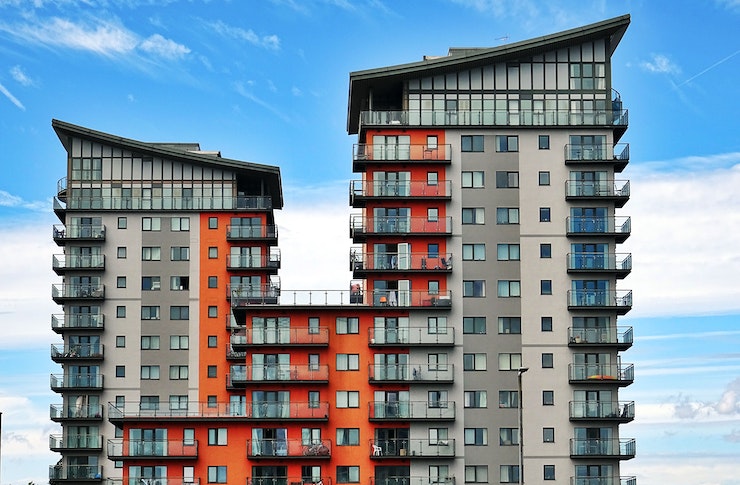Design adjustments to keep interiors cooler in coastal desert climates
Coastal desert apartments face intense solar gain and high humidity. Practical design adjustments — from glazing choices to ventilation strategies — can reduce reliance on mechanical cooling, lower energy use, and improve comfort for residents, renters, and expats living in highrise housing.

Coastal desert climates combine strong sunlight, reflective heat from sand and sea breezes with high daytime temperatures, creating a unique challenge for apartments in Dubai. Thoughtful design adjustments can reduce indoor temperatures, moderate humidity impacts, and cut energy consumption without compromising rental or lease value. These measures also influence long-term maintenance, inspections and servicecharges, and should be considered by housing providers, property managers, and tenants when evaluating a rental or lease in highrise developments.
How does glazing affect energy and cooling?
Windows and glazing are primary pathways for heat gain in apartments. Selecting low-emissivity (low-E) coatings and insulated glazing units reduces solar heat transfer while preserving daylight. In coastal desert settings, glazing with a visible light transmittance that balances natural illumination and solar control can lower cooling loads. Proper framing and thermal breaks prevent conductive heat transfer. For highrise housing, consider double or triple glazing where feasible, combined with external shading or overhangs to limit late-morning and afternoon sun. Regular inspections of seals and frames help avoid degraded performance over time.
What highrise design helps reduce indoor heat?
Highrise buildings can leverage stack effect and façade orientation to manage heat. Position living spaces away from west-facing façades when possible, and use stepped or recessed balconies to shade windows. Incorporating thermal mass in core structural elements can moderate diurnal temperature swings. Ventilation shafts, atria and cross-ventilation strategies reduce reliance on sealed mechanical cooling for some hours each day. For developers and landlords, these design choices can influence servicecharges and maintenance routines; for expats seeking rentals, enquire about façade treatments and communal systems that support passive cooling.
How can shading and ventilation lower energy use?
Shading—both fixed and adjustable—significantly reduces solar gain. Deep balconies, brise-soleil, louvers, and pergolas provide daytime protection, while operable blinds and screens allow occupants control. Night-time ventilation using cooler sea breezes can flush heat if humidity is managed; well-planned operable windows, vents and exhaust fans support this. Integrating mechanical ventilation with heat recovery can maintain indoor air quality while reducing energy for cooling. These strategies also affect connectivity of systems: ensure building-wide controls and broadband-enabled smart thermostats are configured for occupant comfort and operational efficiency.
What maintenance and inspections are essential?
Routine maintenance and scheduled inspections preserve the performance of cooling-related elements. Check glazing seals, insulation integrity, shading mechanisms, and HVAC filters quarterly or per manufacturer guidance. Regular inspections of façades and balcony drains prevent water ingress and salt-related corrosion common in coastal zones. Maintenance plans influence servicecharges for housing and rentals; transparent reporting of inspection schedules and cost allocation in lease agreements helps expats and tenants understand long-term responsibilities and expected upkeep.
How do parking, walkability, and connectivity matter?
Site planning influences cooling needs and occupant lifestyle. Shaded parking reduces heat buildup in vehicles and in adjacent façades, cutting incidental heat transfer into buildings. Walkable access to public transport, shaded walkways and green corridors encourages reduced car use and lower local heat island effects. Connectivity—both physical and digital—matters: reliable broadband and building-wide controls enable remote management of energy systems and occupant engagement with cooling schedules. Developers should integrate landscape and microclimate design to support cooler outdoor spaces that complement interior comfort strategies.
What should expat renters consider about servicecharges and lease?
When leasing an apartment, expats should review how servicecharges cover maintenance of cooling-related systems, glazing repairs, and regular inspections. Clarify responsibilities for HVAC servicing, filter replacement, and façade upkeep. Ask whether the building uses energy-efficient communal systems and whether any smart-building features are included in servicecharges. Understanding inspection cycles and expected maintenance reduces surprises and helps renters compare housing options based on long-term energy and cooling performance rather than upfront aesthetics alone.
In summary, keeping interiors cooler in coastal desert apartments requires a combination of façade design, glazing selection, shading, ventilation, and disciplined maintenance. For highrise housing, thoughtful orientation and passive strategies reduce dependence on mechanical cooling and influence rental and lease considerations, servicecharges, and inspection needs. Integrating these adjustments with building operations and tenant information promotes comfort, energy efficiency, and predictable maintenance outcomes across residential developments.






